
Updated: October 2, 2024
One of the most popular fruits to grow in home gardens is strawberries. They are easy to grow and can be grown in small spaces such as containers or baskets. Strawberries are not only bursting with flavor but they are rich in vitamins and antioxidants. You can enjoy them freshly picked from the garden or in your cooking such as cakes, jams, and salads. Here are some helpful tips for growing an abundance of strawberries in your garden.
Strawberry Culture At A Glance
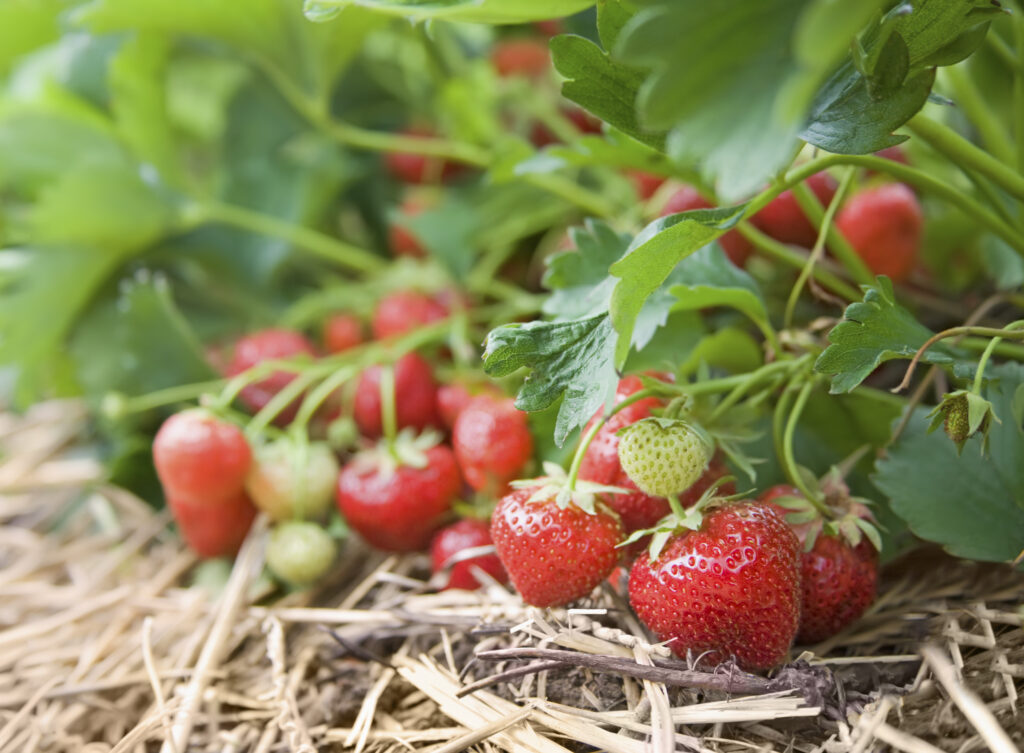
- Choose the best type for your area & needs.
- Do not plant crowns too deep or too shallow.
- Remove runners consistently to encourage crown development.
- Remove the first flowers according to the variety planted.
- Apply shallow but frequent water to establish new roots.
- Fertilize according to the variety planted, starting the first spring after planting.
Types of Strawberries

There are two types of strawberries – June-bearing and Everbearing/Day-Neutral.
June-bearing Strawberries
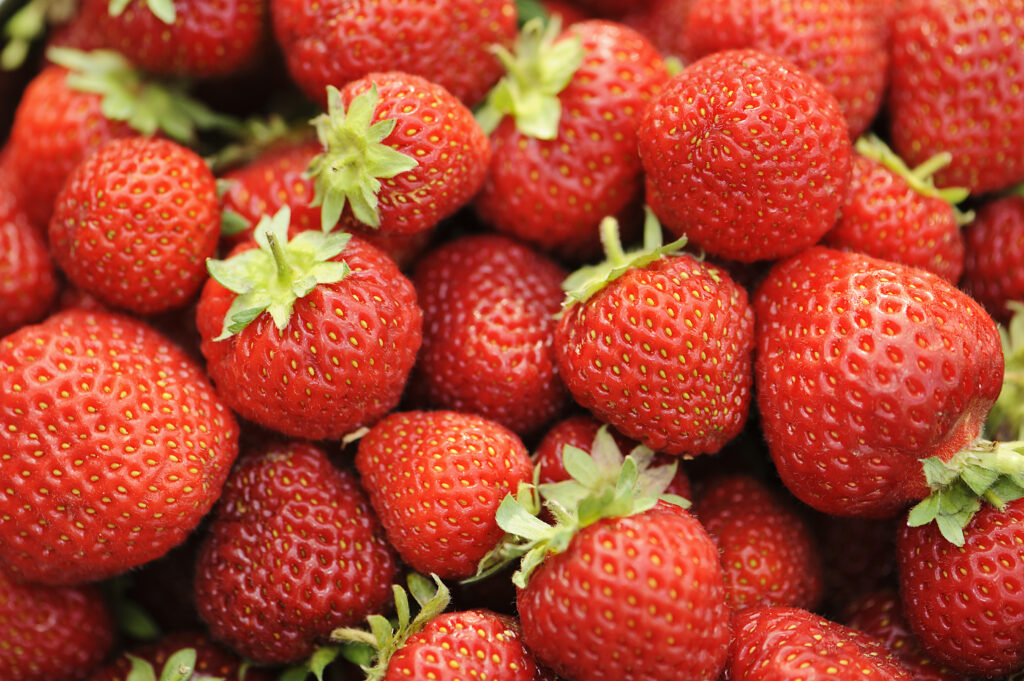
- Do not allow them to flower or produce the first entire season. The first year’s flowers should be removed.
- June-bearing produces one sizable crop per season in early to mid-summer (Typically in June; hence the name).
- June-bearing plants will produce reliably for about 5-6 years if properly cared for and maintained.
- Replant June bearing plants every 3-4 years for successive crops.
Jung Seed Top Pick For Home Gardens – Honeoye June-bearing Strawberry
Everbearing/Day-Neutral Strawberries

- Everbearing plants should have flowers pinched off for the first 6-8 weeks but can then be allowed to produce later that season with no worries.
- Everbearing types can produce two crops per season (weather permitting). In colder climates, some seasons may be too short for plants to produce multiple crops.
- Day-neutral types can be allowed to produce starting in July of their first year and will produce sporadically through the season typically until Oct. (again, weather permitting).
- Everbearing & Day-neutral types are not as cold-hardy as June-bearing types.
- Everbearing plants should be replanted every other year, to keep them consistently producing, especially in colder climates (Zone 6 and colder).
Jung Seed Top Pick For Hanging Baskets – Fort Laramie Everbearing Strawberry
Planting Strawberries
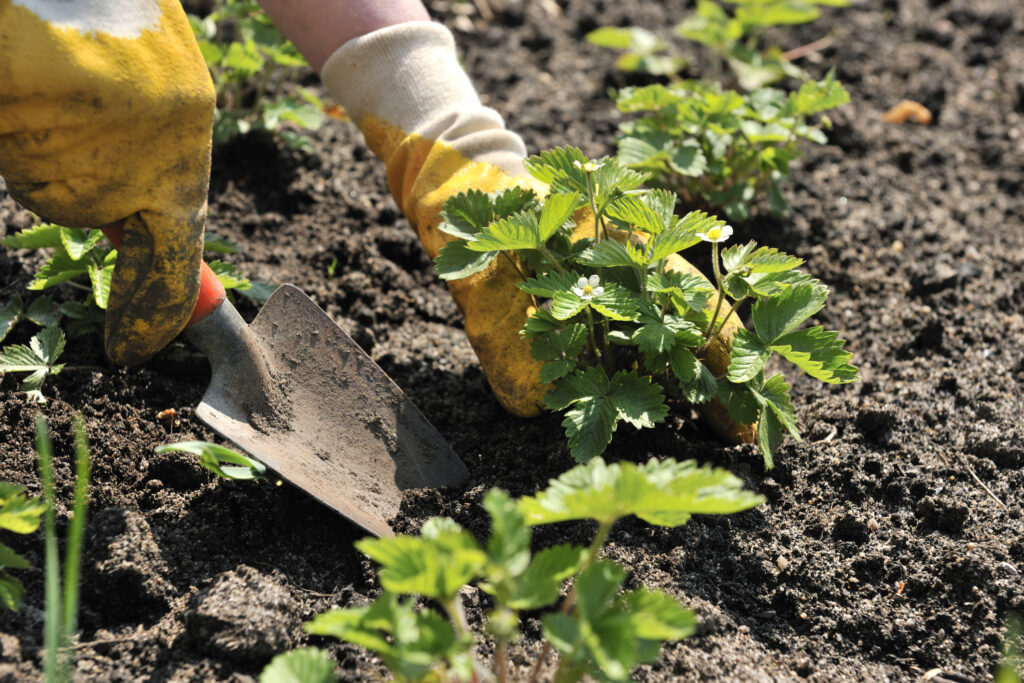
Proper planting depth is critical for establishment. Do not plant too deep, and not too shallow. Pinch off any old dry leaves, or runners and plant individual crowns with roots straight and properly spread out in the soil with just the base of the crown and roots covered. When they are properly planted, the crown should not be covered with soil, nor should the top of the roots be exposed. If they are not quite right, simply lift them and try again until they are at the right depth. Strawberry crops should be watered through the growing season using the 1-inch per week rule as you would with other vegetable crops. Strawberries prefer loose, sandy, or well-drained but organically rich soils.
Planting Systems
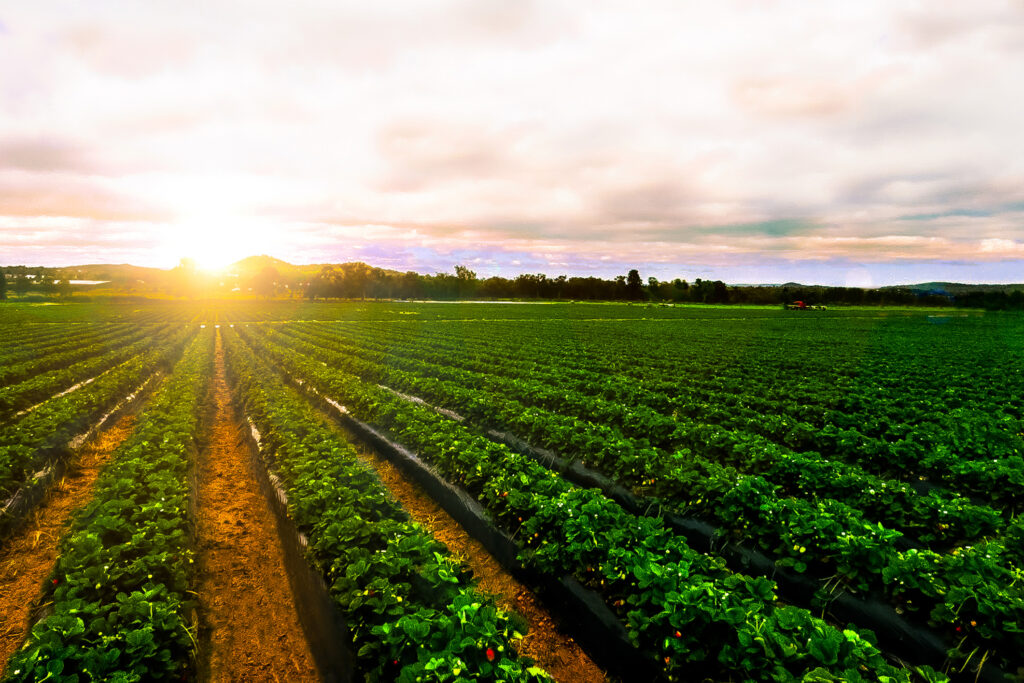
June-bearing types are typically planted using the Matted Row system, which means plants are spaced in rows 15-24 inches apart in rows limited to 12-15 inches wide, and 36-inch spacing between each row. Some runners can grow between individual plants within the row, but always remove runners that want to grow in the space between the rows in the mat system.
Everbearing/Day-neutral types are planted in a Hill system, which has nothing to do with mounding them, this simply means plants are placed in 3 staggered rows with 12 inches between each plant and each row of 3 is then separated with 36-inch spacing between those rows. In this system, remove all the runners, all the time. Strawberry plants that form too many runners will prevent the mother plants from producing good healthy crops. Runners or baby plants rob the mother plant’s energy to flower, set, and hold fruit.
Strawberry Fertilizing Tips
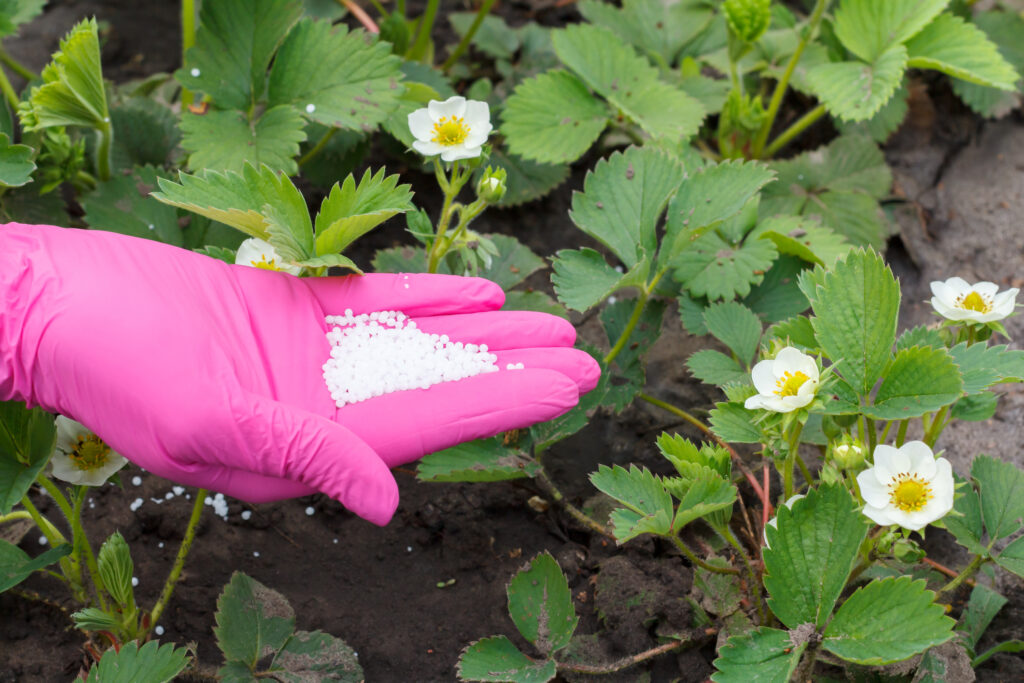
Strawberry plants form flower bud wood for next year’s crop at the end of the summer of the season prior. Blossom buds and flowers consume a great deal of the plant’s energy, therefore proper fertilization is essential for potential fruit production. Use a fertilizer that is lower in nitrogen and higher in phosphorus with some potassium, such as Jung Jump-Start Strawberry Food. Nitrogen-rich soils encourage vast runners and inhibit flowers & fruit.
When Should June-Bearing Strawberries Be Fertilized?
June-bearing types are fertilized in August after renovation happens. In most situations, you should never fertilize June-bearing types in early spring, as this encourages foliage growth and suppresses flower & fruit production. (Renovation see below.)
When Should Everbearing/Day-Neural Strawberries Be Fertilized?
Everbearing/ Day-neutral types are fertilized every month by flowering or setting fruit, which helps replenish their depleted nutritional resources.
What Is Renovation?
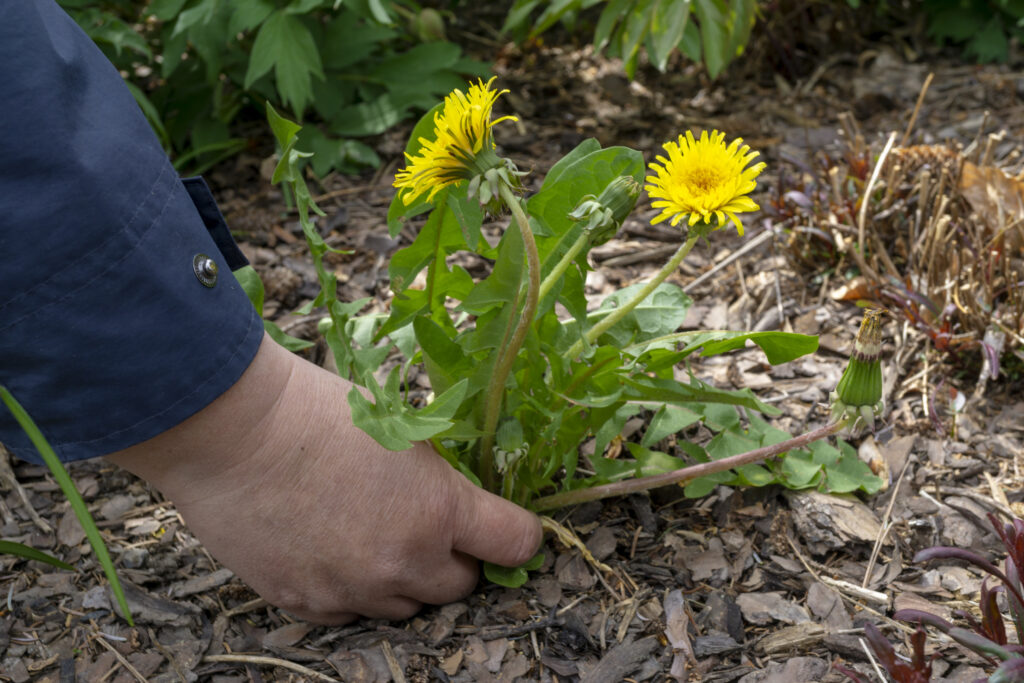
Renovation is the process of removing the past season’s vegetation to physically control plant growth, limit potential disease issues, and encourage new healthy foliage and fruits for the next season.
Renovation Tips
- Mow off old foliage.
- Cutting and cleaning out all old foliage but take care to not damage or cut the crowns. Damaged crowns may not regrow.
- Pull any weeds prior to clipping plants.
- Trim off any runners to maintain rows at 12–15-inch widths and then top-dress around plants with fresh compost or mulch to help retain moisture and suppress weed growth.
Winter Protection For Strawberries
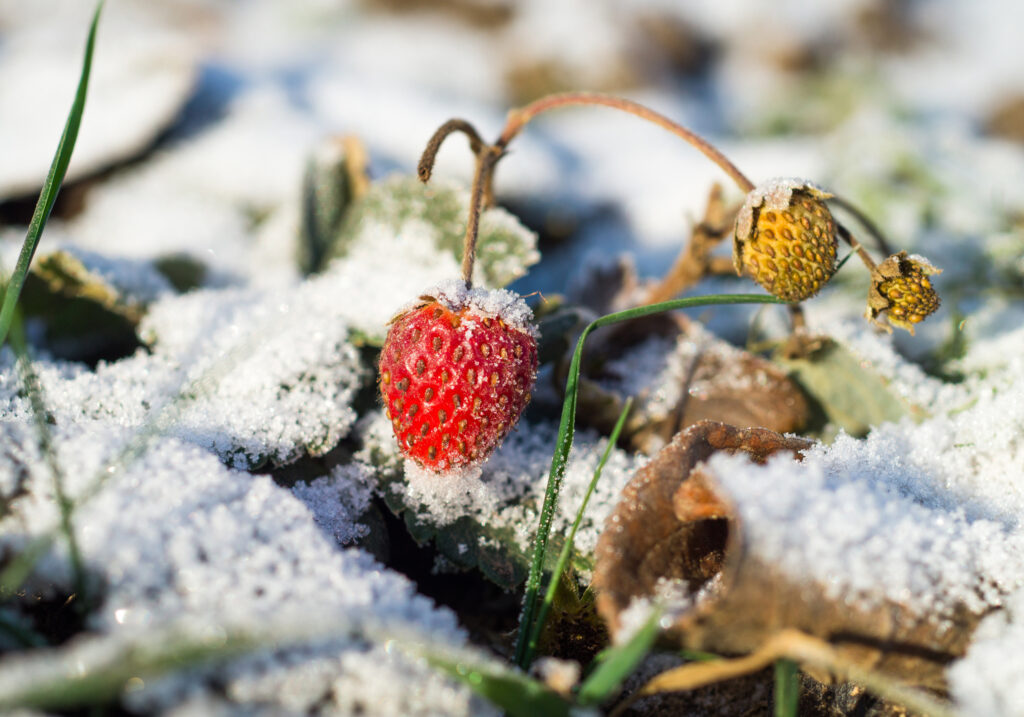
Although strawberry plants are a good cool-weather crop, the crowns can be damaged by long cold severe winters. Therefore, plants need winter protection in zones 6 and colder. NOTE: Fall-planted strawberries need about 6-8 weeks prior to the first frost to become properly established. Remove any blooms that form during the first fall.
Winter Mulching Tips
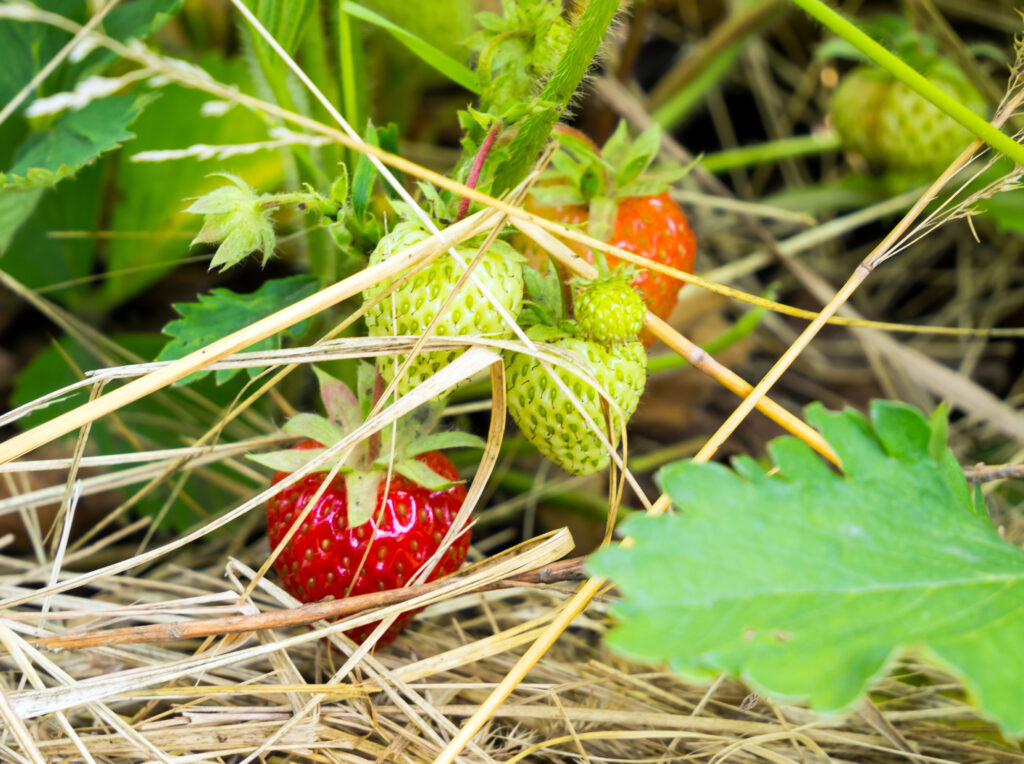
- Clean straw, marsh hay, or wood shavings can be used.
- NOTE: Fallen tree leaves are not typically recommended due to the potential for the spread of diseases.
- If leaves are used, chopping or mowing leaves first to a smaller consistency is recommended, which encourages oxygen and prevents matting.
- After hard frosts (28°-29°) push plants into dormancy and the ground has frozen to approx. ½ deep, then cover with 4-6 inches of loose mulch material.
- Leave mulch material on until early spring when plants can then be uncovered to take advantage of spring sunshine but keep mulch material nearby after uncovering to easily recover plants again if late hard frosts threaten.
- Spring flowers can be damaged at 30°F or lower, however, the strawberry foliage can typically withstand lower temperatures with no issues, but crowns can be permanently damaged if temps get too cold. If you are not sure how cold it will get overnight, cover. Better safe, than sorry.
Jung Seed’s strawberry plants are grown by America’s best growers from virus-free plants in new fumigated soil and propagated under rigid supervision of state inspection. We keep them dormant, allowing you to plant in summer and fall to get a head start on a crop of berries next year.
Other Recommended Reading
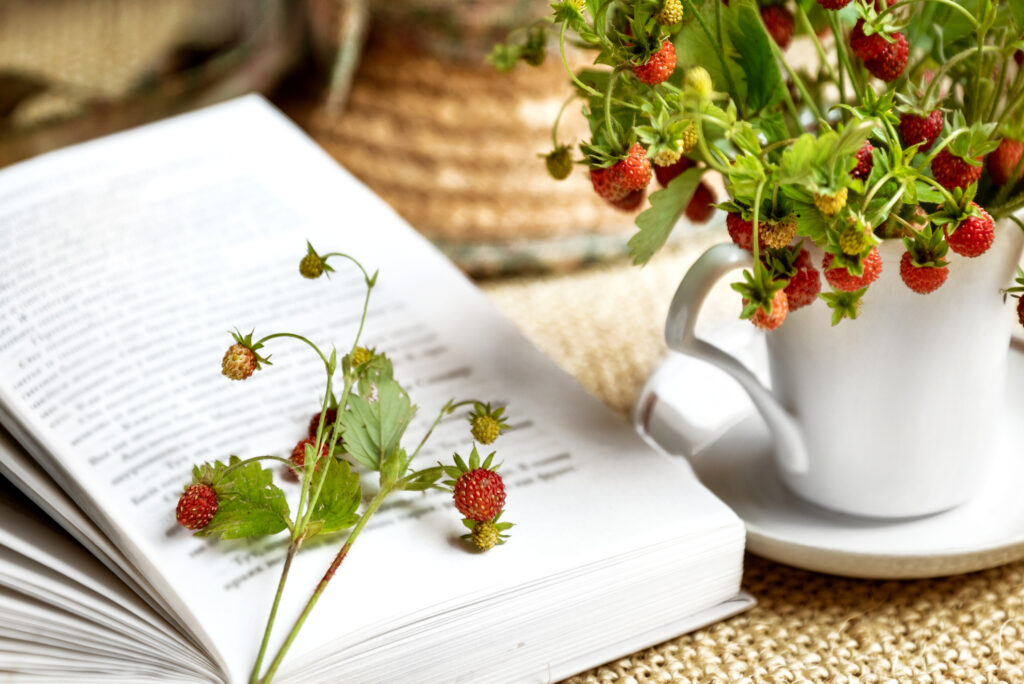
- Small Berries & Tips On Growing Them
- 7 Heart-Healthy Foods You Can Grow
- How To Create A Bird-Friendly Garden
- Fall Gardening: End Of Season Tasks
At Jung Seed Co, we strive to be your go-to guide for all your gardening needs. Our YouTube channel, The Garden Doctor by Dick Zondag, is where he provides gardening tips for all levels of gardeners. When you need reliable gardening advice, turn to the trusted experts at Jung.
View our new catalog online or browse our website for your gardening favorites. Sign up for our weekly email to receive info on new products, exclusive deals, and specials. Join our Facebook page to discuss all things gardening!
